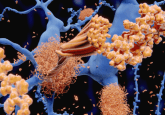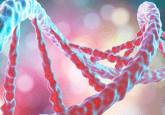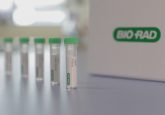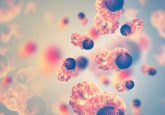Hispanic scientists throughout history
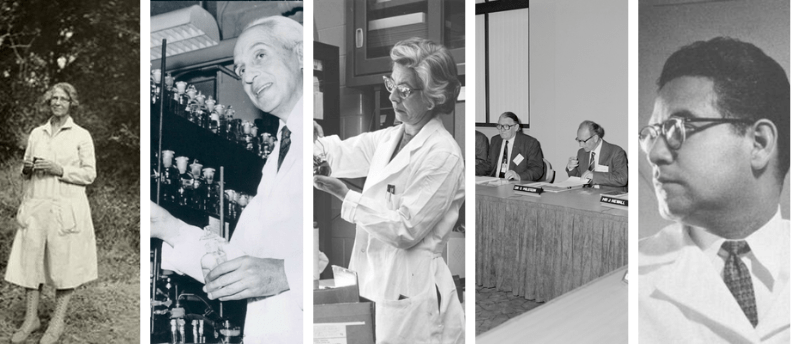
In honor of Hispanic Heritage Month, we’re looking through the history books to find out the stories behind Hispanic scientists that contributed to significant scientific advancements.
Ynéz Mexía: a flourishing botanist
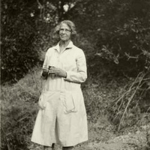 Ynéz Mexía was the first Mexican American female botanist and went on many expeditions over her 13-year career, collecting and preserving around 145,000 plant specimens. She collected so many specimens that modern botanists are still working their way through her samples, which contribute to important research collections around the world. It is estimated that Mexía discovered around 500 new species, but we won’t know for sure until her mammoth collection has been carefully studied.
Ynéz Mexía was the first Mexican American female botanist and went on many expeditions over her 13-year career, collecting and preserving around 145,000 plant specimens. She collected so many specimens that modern botanists are still working their way through her samples, which contribute to important research collections around the world. It is estimated that Mexía discovered around 500 new species, but we won’t know for sure until her mammoth collection has been carefully studied.
Mexía was born in 1870, most likely in Washington DC (USA), but moved back to Mexico after finishing school. It wasn’t until 1921, at the age of 51, that Mexía began her scientific career after moving to San Francisco (CA, USA). Here, she joined various environmental groups including the Sierra Club and Save the Redwood League, which inspired her to study botany at the University of California, Berkley (CA, USA).
This was during a period when scientific research was focused on gathering, collecting and classifying as many species as possible. Mexía’s first botanical expedition took place in 1925, sponsored by Stanford University (CA, USA), to Sinaloa (Mexico). She kept detailed observations and collected 500 plant specimens on this trip – Charles Darwin collected a similar amount during his Beagle voyage – including around 50 previously unknown species. One of these species is the flowering plant called Mimosa mexiae, which was named after her. It was also on this trip that Mexía realized she was more productive embarking on these expeditions on her own or with local guides.
Mexía obtained funding and continued going on botanical expeditions traveling to remote locations by any means necessary, collecting plants in North and South America, including Alaska, Mexico, Brazil and Tierra del Fuego. Over her career, Mexía discovered two plant genera, one of which was named in her honor called Mexianthus. Despite this and the many other contributions that Mexía made to the field, she was mostly referred to as a botanical ‘collector’, whilst her male colleagues were recognized as scientists. Now, some also consider Mexía as an early science communicator, as she would tell tales of these expeditions whilst giving lectures all over San Francisco as well as write about her adventures for US-based publications.
Mexía broke through many barriers during her career, making enormous and integral contributions to scientific research. As she once observed: “Many people at the time said that a woman could not travel alone. I don’t think there is any place in the world where a woman can’t venture.”
Severo Ochoa’s contribution to cracking the genetic code
 Severo Ochoa was a biochemist and enzymologist whose career spanned seven decades and resulted in more than 200 published papers, 30 honorary doctorates, and even an asteroid named in his honor (the asteroid 117435 Severochoa, discovered in 2005). Ochoa was born in 1905 in Lucara (Spain), and his interest in biology was piqued by Spanish Nobel Laureate, Santiago Ramón y Cajal, who also has an honorary asteroid (117413 Ranoycajal). Cajal studied the nervous system in the 19th century and is considered the father of modern neuroscience.
Severo Ochoa was a biochemist and enzymologist whose career spanned seven decades and resulted in more than 200 published papers, 30 honorary doctorates, and even an asteroid named in his honor (the asteroid 117435 Severochoa, discovered in 2005). Ochoa was born in 1905 in Lucara (Spain), and his interest in biology was piqued by Spanish Nobel Laureate, Santiago Ramón y Cajal, who also has an honorary asteroid (117413 Ranoycajal). Cajal studied the nervous system in the 19th century and is considered the father of modern neuroscience.
After completing a medical degree at the University of Madrid (Spain) in 1929, Ochoa went on to Otto Meyerhof’s lab at the Kaiser Wilhelm Institut für Medizinische Forschung (now the Max Planck Institute for Medical Research; Heidelberg, Germany), to work in the new discipline of biochemistry, studying the biology and physiology of muscle. By 1931, Ochoa had fallen into enzymology, which was to become the focus of his life’s work.
In 1933, Ochoa returned to Madrid and studied glycolysis in heart muscle and became increasingly interested in enzymatic processes and the transfer of energy. Here, he studied the enzyme glyoxalase, which detoxifies byproducts from cells. However, due to the Spanish Civil War in 1936, he relocated to Germany then England and finally the United States.
Ochoa was appointed as the director of the Department of Biochemistry at the New York College of Medicine (NY, USA) in 1954. It was here, whilst studying oxidative phosphorylation, that Ochoa discovered and isolated polynucleotide phosphorylase (the enzyme known as PNPase) with postdoctoral fellow Marianna Grunberg-Manago.
PNPase can be used to synthesize RNA with a defined composition by catalyzing the polymerization of polyribonucleotides, although it later turned out that the in vitro physiological function of this enzyme is actually to break down RNA. PNPase was a key reagent in breaking the human genetic code and it was for this discovery that Ochoa was awarded the Nobel Prize for Physiology or Medicine in 1959, which was shared with Arthur Kornberg who synthesized DNA.
In addition to the discovery of PNPase, Ochoa made many contributions to our understanding of biochemistry. He studied and isolated several enzymes that catalyze steps of the Krebs cycle, described the biological functions of vitamin B1, the basic steps in the metabolism of carbohydrates and fatty acids, the photochemical reduction of pyridine nucleotides in photosynthesis among other enzymatic processes and biological functions of key molecules.
Sarah Elizabeth Stewart: Opening the doors to viral oncology
 Sarah Elizabeth Stewart was born in 1906 in Tecalitlán (Mexico) but following the start of the Mexican Revolution in 1911 moved to Oregon (OR, USA). After graduating from high school in 1923, Stewart attended the New Mexico College of Agriculture and Mechanic Arts (now the New Mexico State University; NM, USA) where she majored in biology and was awarded a degree in home economics and general science. Following this, she obtained a master’s degree and a PhD in microbiology, during which she worked at the NIH studying anaerobes and helped to develop toxoids (inactivated toxins often used in vaccines) for gangrene treatment that would be used in World War II.
Sarah Elizabeth Stewart was born in 1906 in Tecalitlán (Mexico) but following the start of the Mexican Revolution in 1911 moved to Oregon (OR, USA). After graduating from high school in 1923, Stewart attended the New Mexico College of Agriculture and Mechanic Arts (now the New Mexico State University; NM, USA) where she majored in biology and was awarded a degree in home economics and general science. Following this, she obtained a master’s degree and a PhD in microbiology, during which she worked at the NIH studying anaerobes and helped to develop toxoids (inactivated toxins often used in vaccines) for gangrene treatment that would be used in World War II.
Stewart was interested in the link between viruses and cancer, an idea that at the time was dismissed by the medical community and considered improbable. Stewart submitted a proposal to the NIH for funding to research the viral etiology of cancer; however, she was refused on the claim that she did not have enough education and was not qualified to work on human subjects. This didn’t deter Stewart, and she decided to earn a medical degree to gain the needed experience.
However, in 1944 most universities in the US did not allow women to enroll. To work around this, Stewart took up a teaching position at Georgetown University (Washington DC, USA) in bacteriology, which would enable her to take medical courses without officially enrolling. Three years later, female students were allowed to receive a medical degree at Georgetown University so, finally, Stewart could officially enroll and graduate with a Doctorate in Medicine in 1949, becoming the first woman to receive a doctorate degree from the university.
As a Doctor of Medicine, Stewart submitted a second proposal to the NIH to study the connection between viruses and cancer. She was rejected. Again.
To gain yet more experience, Stewart worked in gynecology at a hospital in Staten Island (NY, USA), after which she took up a position at the National Cancer Institute. For a third time, Stewart requested to study the potential that viruses could cause cancer, and this time was accepted.
With her accepted proposal and funding in hand, Stewart could now study the viral link to cancer. In 1953, along with her research partner Bernice Eddy, they published a paper on leukemia in mice, stating that a “substance” had caused the tumors. To avoid controversy, they did not specify that this “substance” could be a virus. To prove that the cancer-causing agent was a virus, Stewart isolated tumors that were first cultivated in monkey cells and then mouse embryos. When injected into mice, the fluid caused around 20 histologically different tumors, suggesting this was indeed a tumor-inducing virus. Stewart and Eddy named it the polyomavirus, literally meaning ‘many tumors’. In 1958, they successfully grew the virus in tissue culture and called it the Stewart-Eddy polyomavirus (SE polyomavirus), showing that there are certain cancer-causing viruses that can be transmitted between animal species.
Stewart changed the understanding of cancer, and how it can be treated or prevented. It was this work that opened to doors to viral oncology and a future with cancer vaccines. By 1960, the National Cancer Institute was spending $3.9 million a year on the link between viruses and cancer. In 1976, HPV was identified to cause cervical cancer, leading to the hugely effective HPV vaccine. It’s clear that Stewart’s determination to study viral causes of cancer has had immeasurable benefits.
César Milstein’s synthesis of monoclonal antibodies
 Monoclonal antibodies are utilized in the diagnosis and treatment of a variety of diseases, with new applications continuing to be realized. These applications would not be possible without the work of César Milstein and George Köhler, who developed the first method for producing monoclonal antibodies in the lab. They were awarded the Nobel Prize in Physiology or Medicine in 1984 for this work.
Monoclonal antibodies are utilized in the diagnosis and treatment of a variety of diseases, with new applications continuing to be realized. These applications would not be possible without the work of César Milstein and George Köhler, who developed the first method for producing monoclonal antibodies in the lab. They were awarded the Nobel Prize in Physiology or Medicine in 1984 for this work.
Milstein was born in Bahia Blanca (Argentina) in 1927 and studied biochemistry at the National University of Buenos Aires (Argentina) before going on to research aldehyde dehydrogenase for his PhD at the University of Buenos Aires (Argentina) in 1957. He was then awarded a British Council research scholarship to study the phosphoglucomutase enzyme at the University of Cambridge (UK) under Frederick Sanger. In 1961, Milstein was appointed as the head of the Department of Molecular Biology at the National Institute of Microbiology (Buenos Aires, Argentina); however, he returned to Cambridge in 1962 due to his growing frustrations with the political interference in his lab following the 1962 military coup in Argentina.
Upon returning to Cambridge, Milstein worked at Sanger’s new Medical Research Council Laboratory of Molecular Biology where he shifted his focus from enzymes to antibodies, in particular antibody diversification. It was here, in 1975, that Milstein and Köhler developed the first method to produce specific antibodies reliably, which remains one of the most common methods to produce monoclonal antibodies.
Monoclonal antibodies are synthesized in a lab using proteins that are made naturally by the body’s immune system. Milstein and Köhler’s method combines myeloma cancer cells with cells that are immune to a certain antigen, harvested from the spleen cells of an immunized animal, to produce the corresponding antibodies.
After developing a method to reliably produce specific antibodies in culture, Milstein turned his attention to their potential applications. He found that monoclonal antibodies could bind to cell surface markers, changing how cell types can be identified and characterized. For example, monoclonal antibodies could be used to recognize surface antigen markers. Since then, monoclonal antibodies have made a particular impact in cancer treatment and are used to target therapeutics, as well as in cancer imaging and diagnostic assays in clinical labs.
Milstein returned to his main scientific interest, studying somatic diversification in immunoglobin genes (genes that function as antibodies), studying the changes following an antibody response.
Luis Ernesto Miramontes Cárdenas: the forgotten father of ‘the pill’
 There’s only one pill that does not need to be referred to by name and has led to undeniable social change since its conception – the pill. The key ingredient in one of the first oral contraceptives was thanks to the Dioscorea Mexicana, the Mexican yam, and a chemist called Luis Ernesto Miramontes Cárdenas.
There’s only one pill that does not need to be referred to by name and has led to undeniable social change since its conception – the pill. The key ingredient in one of the first oral contraceptives was thanks to the Dioscorea Mexicana, the Mexican yam, and a chemist called Luis Ernesto Miramontes Cárdenas.
Miramontes was born in 1925 in Los Mochis (Mexico) and studied chemistry and chemical engineering at National Autonomous University of Mexico (UNAM; Mexico City, Mexico). He completed his thesis at Syntex, a Mexican company that was leading the field in producing low-cost hormones using the Mexican yam, which contained lots of molecular precursors for various hormones. In 1949, Miramontes was assigned to work on a project in collaboration with UNAM to develop a progesterone pill. At the time, progesterone was already being used by doctors to treat patients, however, had to be injected. To make a formulation of progesterone that could be administered orally, researchers needed to find a way to make the molecule survive in the digestive tract and have higher biological activity.
Syntex modified progesterone derived from the Mexican yam and it was Miramontes who figured out the final step in this synthesis, signing his lab book with this key step on the 15th of October 1951. He added an essential carbon-carbon triple bond, resulting in the final molecule that was called norethindrone.
A year later, an American company called Searle reported their own molecule called norethynodrel, which only differs by the position of the triple bond and converts to norethindrone in stomach acid. The developers of the first oral contraceptive chose this molecule, not norethindrone. However, it turned out that Syntex’s norethindrone had longer-lasting impacts, so despite not being in the first pill, norethindrone was the 138th most prescribed drug in the United States in 2018, whilst Searle’s molecule is no longer marketed.
Despite Miramontes’ contributions to norethindrone, his supervisor Carl Djerassi gained most of the credit, although it is debatable if Miramontes would have wanted more recognition and the media attention that would accompany this. Whilst Djerassi does credit Miramontes in his works, he refers to Miramontes as “a young Mexican chemist”.
After the success of norethindrone, Miramontes continued as a researcher and was a co-founder of UNAM’s Institute of Chemistry, where he was a professor. He also developed chemical processes to convert gases from car exhausts into harmless products to make leaded gasoline safer and by the early 1970s, Miramontes has more than a dozen patents.
In 2010, the Mexican Academy of Sciences ranked Miramontes’ work as one of Mexico’s top three scientific contributions, but sadly Miramontes didn’t live to see this.
Whilst researching these scientists, it’s apparent how much of their ground-breaking research we now take for granted and often forget to think about the people behind the science. Awareness months like Hispanic Heritage Month gives us an opportunity to reflect on the stories of scientists and recognize the work of scientists both past and present.
Ynéz Mexía
- Massive Science. Meet Ynes Mexia, late-blooming botanist whose adventures rivalled Darwin’s. [Accessed: 23 September 2022].
- Sunday’s google doodle honors botanist Ynés Mexía [Accessed: 23 September 2022].
- National Park Service. Ynes Mexia [Accessed: 23 September 2022].
- Ynés Mexía [Accessed: 23 September 2022].
Severo Ochoa
- Tan SY, Pettigrew K. Severo Ochoa (1905-1993): The man behind RNA. Singapore Med. J. 59(1), 3–4 (2018).
- Bernard Becker Medical Library. Severo Ochoa (1905-1993) [Accessed: 23 September 2022].
- The Nobel Prize. Severo Ochoa [Accessed: 23 September].
- Severo Ochoa (1905-93). Nature 366, 408. (1993).
- Severo Ochoa (1905 – 1993). [Accessed: 23 September 2022].
Sarah Stewart
- Las Cruces Sun News. Open Stacks: Prominent Mexican-American cancer researcher graduated from LCHS, NMSU. [Accessed: 23 September 2022].
- Eddy BE. Sarah Elizabeth Stewart 1906-1976. JNCI 59(4) 1039-1040 (1977).
- Georgetown University. Biography of Sarah Elizabeth Stewart, MD, PhD. [Accessed: 23 September 2022].
- Smithsonian Magazine. The woman who revealed the missing link between viruses and cancer. [Accessed: 23 September 2022].
César Milstein
- Rabbitts TH. César Milstein October 8, 1972 – March 24, 2022. Cell 109(5) 549-550 (2002).
- What is biotechnology? A healthcare revolution in the making. The story of César Milstein and monoclonal antibodies. [Accessed: 23 September 2022].
- The American Association of Immunologists. César Milstein, PhD. [Accessed: 23 September 2022].
- The Nobel Prize. César Milstein. [Accessed: 23 September 2022].
Luis Miramontes
- Science News. Luis Miramontes helped enable the sexual revolution. Why isn’t he better known? [Accessed: 23 September 2022].
- C&EN. Hispanic and Latino chemists you should know about. [Accessed: 23 September 2022].
- Vision Learning: Luis E. Miramontes: The breakthrough invention of oral contraceptives. [Accessed: 23 September 2022].
